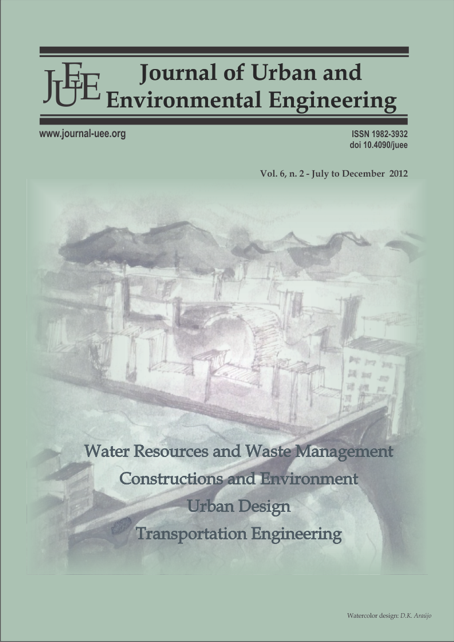EVALUATION OF TREATED SEWAGE DEODORIZATION IN ROOT-ZONE WETLANDS THROUGH DYNAMIC OLFACTOMETRY <a href="http://dx.doi.org/10.4090/juee.2012.v6n2.113122">(doi: 10.4090/juee.2012.v6n2.113122)</a>
DOI:
https://doi.org/10.4090/juee.2012.v6n2.%25pKeywords:
Olfactometry, basic sanitation, sewage treatment, root zone (wetlands)Abstract
The wastewater treatment station (WWTS) by wetlands consists of a physic-biological system with part of the filtering formed by plants and projected according to the filtering soil principle. The elements that constitute the medium, in this case the soil, microorganisms and plants, are responsible for the organic matter and the sewage odor compounds degradation. This study employed the static and dynamic olfactometry methodologies to evaluate the treated effluents odor removal in two stations by root-zone wetlands in rural communities in Irati (PR). Olfactometry results were compared to the effluents physic-chemical analysis, and parameters such as dissolved oxygen (DO), chemical oxygen demand (COD) and pH were taken into account. Results revealed DO increase and COD removal in the treated effluents. Olfactometric analyses pointed to noticeable levels of odor in the treated effluents; however, there was significant reduction in the odor intensity of exit effluents in relation to the entrance ones. In general, the wastewater treatment station through wetlands showed efficient to the removal of odor compounds, as well as the removal or organic matter from the medium.Downloads
Download data is not yet available.
Downloads
Published
2012-12-26
Issue
Section
Articles




